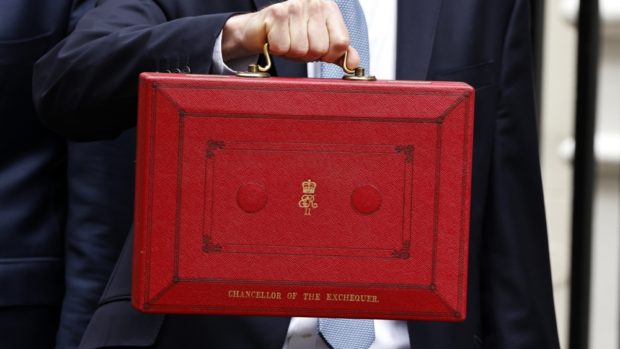
Businesses in the UK risk losing up to £4.5 billion in lost sales this holiday season because of bad customer service, according to new research released today by Qualtrics. Annually, this rises to nearly £3 trillion ($3.8 trillion) of sales at risk globally due to bad customer experience – a figure close to £94 billion ($119 billion) more than last year based on World Bank data.
As organisations work to win customers’ loyalty and hard-earned dollars in this holiday period, 53 per cent of consumers say they will cut spending after a bad customer experience, and admit that one in 10 (12 per cent) of their brand interactions don’t live up to expectations. The industry sectors most at risk of cuts in spending after a bad experience are fast food brands (66 per cent), department stores (65 per cent), online retailers (64 per cent), auto dealers (63 per cent), mobile phone providers (59 per cent), and parcel delivery services (56 per cent).
Customers also report their biggest customer experience pain points are service delivery issues (selected in 46 per cent of bad experiences), communication problems (45 per cent), and employee interactions (39 per cent). Price (37 per cent), quality (35 per cent), and after-sales support (21 per cent) are less of an issue but remain red flags for brands.
“The holidays are a critical sales period and this year the stakes are higher than ever with cost of living pressures expected to impact sales. Customers want to be kept up to date on what’s happening with their orders, know they can trust they’re going to get the product and service they’ve been promised and see value from their purchase – and they’re rewarding brands that do it well,” said Isabelle Zdatny, Customer Loyalty Expert, Qualtrics.
Frontline workers under strain
Compounding the customer experience risks for organisations are the findings that despite demonstrating a high-degree of customer focus, frontline employees – such as retail workers and restaurant servers – often report lower levels of engagement, intent to stay, and inclusion. Frontline workers are also less likely to say their expectations at work are met, or that they are paid fairly. These trends are particularly prevalent in physical retail stores and table service restaurants.
| Global Average
(35k) |
Frontline employees
(8918) |
Global frontline restaurant
(343) |
Global frontline Retail Stores
(875) |
Global frontline consumer services
(153) |
Global frontline telco
(151) |
|
| Engagement | 71 per cent | 68 per cent | 66 per cent | 62 per cent | 65 per cent | 62 per cent |
| Expectations Exceeded | 43 per cent | 36 per cent | 42 per cent | 29 per cent | 38 per cent | 41 per cent |
| Intent to Stay 3+ years | 64 per cent | 60 per cent | 42 per cent | 55 per cent | 60 per cent | 53 per cent |
| Inclusion | 74 per cent | 72 per cent | 70 per cent | 70 per cent | 67 per cent | 70 per cent |
| Wellbeing | 73 per cent | 71 per cent | 71 per cent | 68 per cent | 71 per cent | 68 per cent |
| Encouraged to develop new ways of serving customers | 72 per cent | 67 per cent | 75 per cent | 70 per cent | 70 per cent | 76 per cent |
| Paid fairly for the work I do | 56 per cent | 55 per cent | 58 per cent | 52 per cent | 57 per cent | 53 per cent |
“Front-line, customer-facing employees have a dramatic effect on customer perceptions and unfortunately many of these employees are starting this holiday season on the backfoot. There is a well-known reciprocal relationship between employees and customers that can either become a virtuous or a vicious cycle. Kickstarting a virtuous cycle means supporting and meeting the needs of front-line employees, who in turn, will be more likely to create more satisfied, loyal customers who spend more this season” said Dr. Benjamin Granger, Chief Workplace Psychologist, Qualtrics.
Five ways to deliver a great customer and employee experience this holiday season
1. Ease the pressure on frontline employees – making it easier for frontline employees to meet customer needs is a key factor in exceptional customer experiences. Whether on the shop floor, in call centres, or managing digital chats, they face significant challenges while working to create positive experiences. By streamlining processes, improving communication, and investing in training, organisations can empower these teams and enhance overall customer satisfaction.
2. Communicate clearly and often to reduce confusion – customers prefer brands that keep them informed at every stage, from product availability to purchase, delivery, and after-sales support. It’s crucial for organizations to provide the right information at the right time to ensure customer satisfaction and trust, while simultaneously reducing call volumes.
3. Make it simple and easy for customers by keeping your promises – the holidays can be stressful, and customers want assurance they will receive the products and services as promised. For example, if next day delivery is advertised, the brand must fulfill this expectation to maintain trust and prevent added stress and uncertainty for the customer. Carefully consider how your brand promise forms customer expectations.
4. Stay responsive to customer needs – customer needs, expectations, preferences and behaviours are constantly changing. Brands must stay ahead of these changes by using customer insights captured from surveys, online reviews, call centers, social media, and more. This enables organisations to identify trends and unmet needs, allowing them to seize opportunities swiftly.
5. Exceed expectations where it counts – Leading brands focus on prioritizing key moments to exceed expectations for customers and employees in the moments that matter to them, ensuring trust in the information provided, faster interaction completion, and for it to be a seamless experience. For instance, as more customer interactions are complete via digital channels it’s likely to raise the stakes and importance for person-to-person engagements.







Share